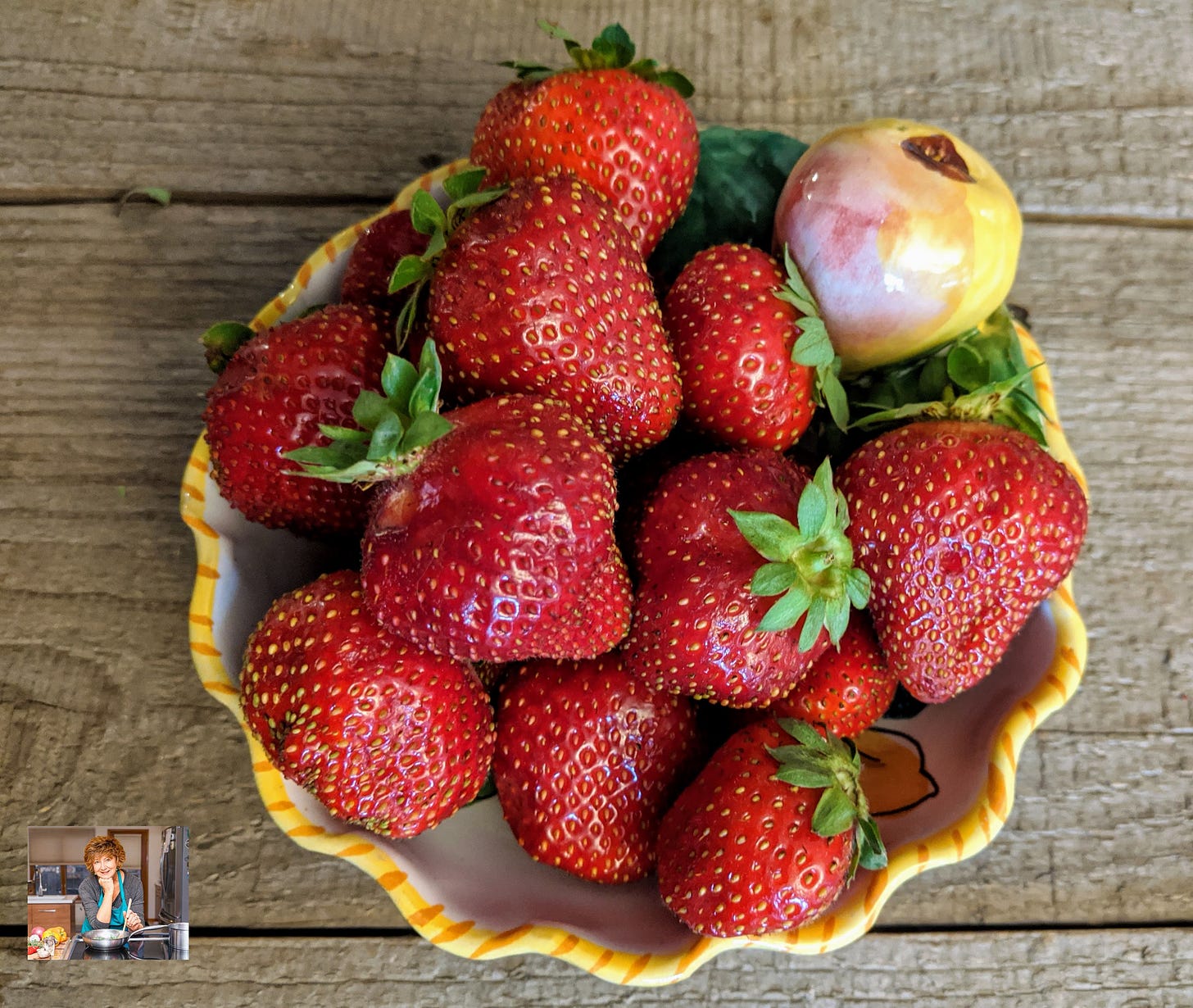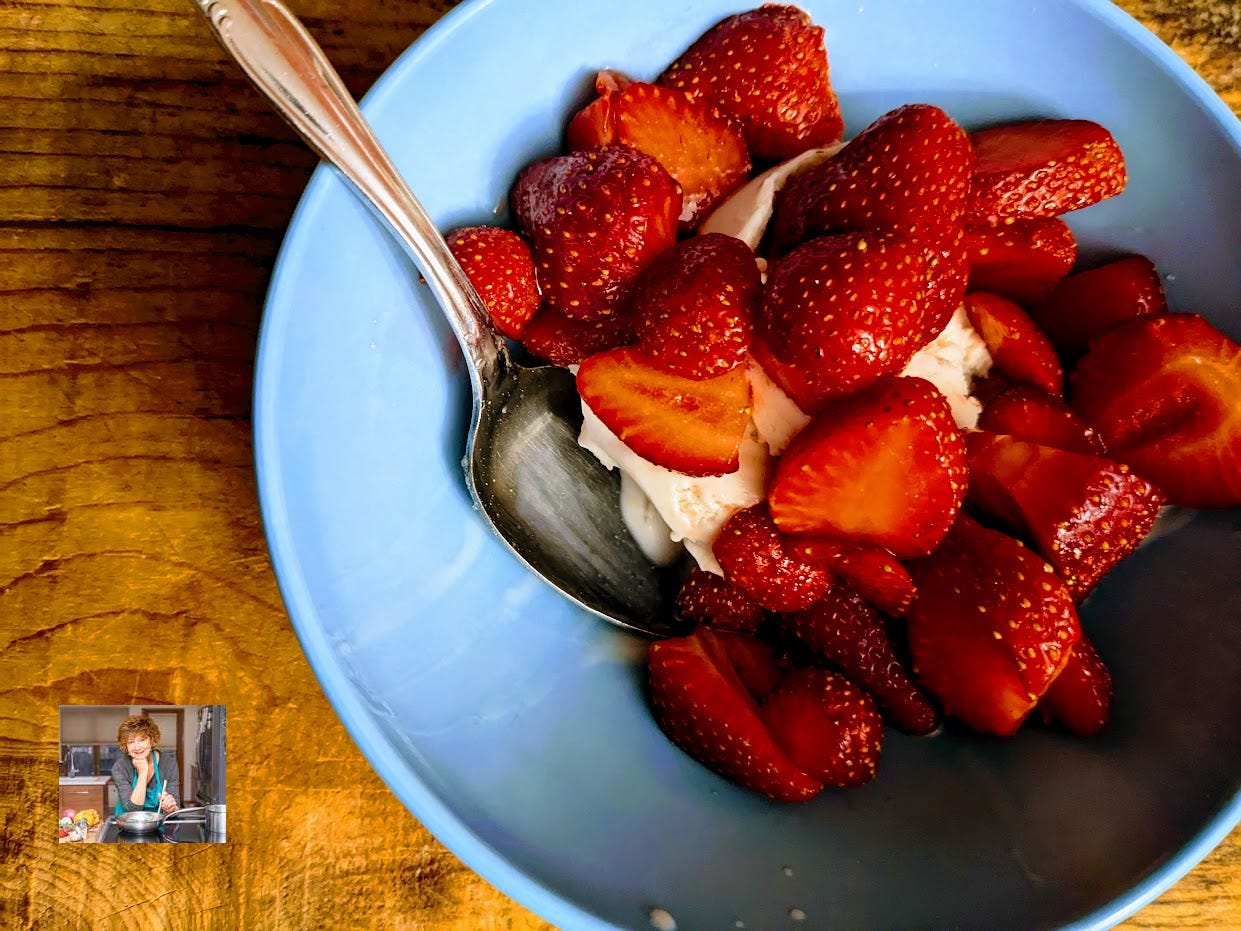Strawberries. Those luscious, sweet vine fruits, dripping with red, juicy berries that herald in Spring, Summer, or both, depending on where you live. If you have read my cookbook, Food ELEVATED, you know that I have a “thing” for strawberries, and pretty much detest the hollow, white, bred-for-travel varieties found year-round in the store.
Last week, I spent one morning picking strawberries at a local grower, partly for the experience, and partly just to help the grower out with his harvest. Finding strawberry pickers, not to mention just farm workers in general, is challenging even in the best environments. In two hours, I picked 14 pints directly into containers, a half-bucket of “seconds” or about another 5 pints, and covered the bottom of a large bucket with mushy “thirds”, or waste. Firsts had clean exteriors, no bug bites, maybe not perfectly shaped but definitely in the strawberry genre, perhaps a funky dent, not all equal size, but overall, looked like a strawberry that hadn’t been overbred for a long haul to a traditional grocery store.
Seconds had bug holes but still held their shape. Seconds would sell for half-price purchase, or in reality, they for me. Thirds were to pull off non-edible strawberries so the plant would continue to bloom and produce fruit until the first cold snap here in Northern Colorado, which is usually the end of September or the first week of October.
Farming, especially small-craft farming, is tough. We all want cheap produce, but with cheap grocery store produce, comes low wholesale prices to the farmers, gleaning out of seemingly imperfect fruits and vegetables, and a LOT of waste. The American consumer wants perfection, the grocery store wants fruits and veg that stack in a particular way, not a slightly misshapen strawberry that is still deliciously delectable on the inside. Why would anyone, though, want a white, hollow, unsweet, crunchy, excessively sized strawberry when you can have juicy bliss over your ice cream – or just fresh from the vine?
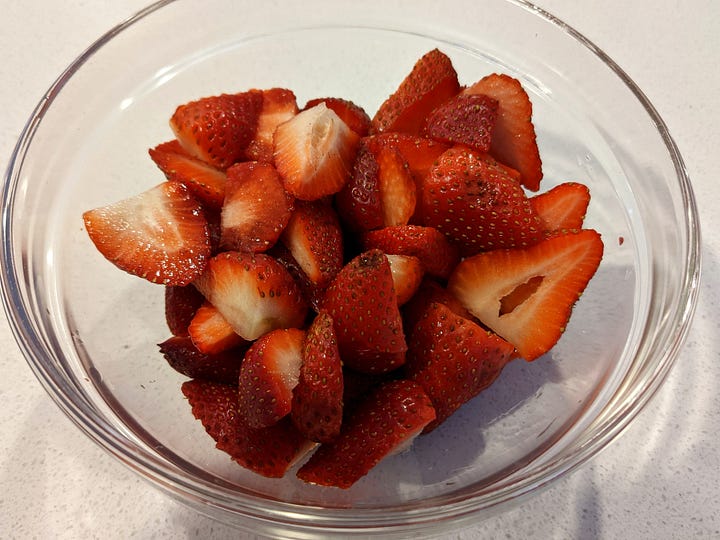
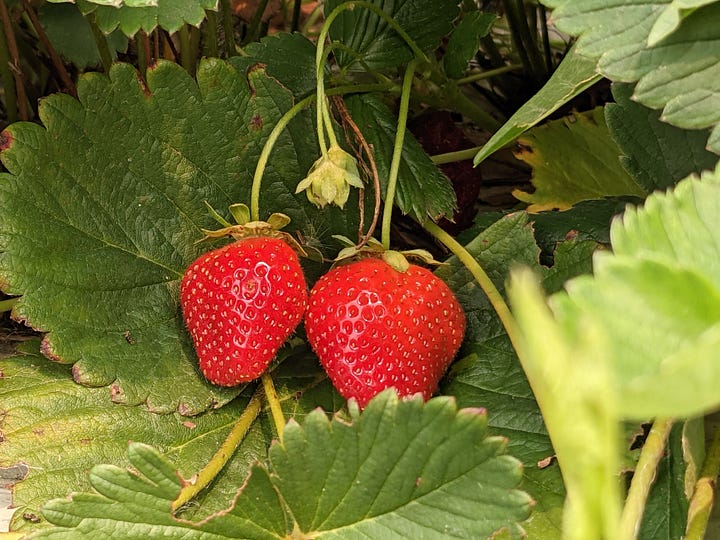
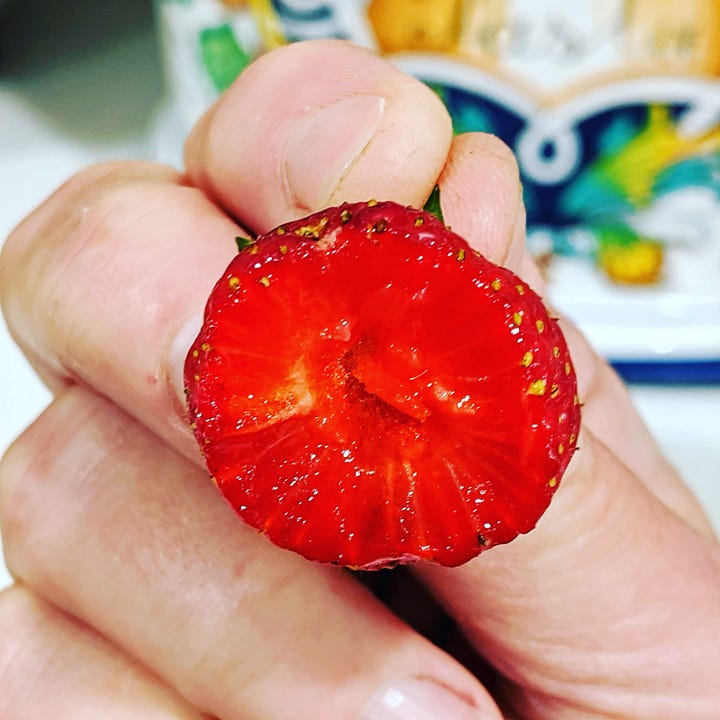

As you might be picking up, berry size is a source of contention for me. In the 1960s and 70s, you could buy pints of small, sweet, dark red through and through strawberries. The only way to buy strawberries now is in quart containers, because, you guessed it, the strawberries are modified with fertilizer and breeding, to be huge. And tasteless. I prefer small to medium-sized, beautiful glossy, all-over ruby fruits sprinkled with little brown seeds, with no hint of white, off-white, cream, sand, or alabaster near their crowns or green variations near the stems. The ones that come, say, 15-20 to a pint. This UC Davis article written in 1963 and updated in 2016 is a fascinating history about the strawberry economy from pre-WWII to the early 60s. Mexican competition, the rise of the frozen strawberries, fertilizer, managing a very perishable fruit, and more, created a social environment for the conundrum we are in now. Unfortunately, it seems, as consumers wanted strawberries year-round, we have to go with large, tougher strawberries so they can travel across the continent with ease.
For this help project, I didn’t want to get paid. I just wanted to pick organic strawberries before the wasps and yellow jackets got to them before they transformed into seconds, help my farmer friends have fresher picked perfect strawberries to customers who don’t have time to pick their own, and well, I just wanted get my fingernails dirty a bit experiencing how our food gets to our table.
What I Discovered.
It’s hard. Strawberry picking is one of the hardest products to pick. I worked on my process to make sure my back and knees were cushioned and cared for – which was a bit hard to do. Took stretch breaks and drank plenty of water.
The best strawberries seemed to be in the shade of the plant and the bindweed. I looked carefully for those special “first” berries. They could be hidden near the roots of the plant – not glowing red in the bright sun, which is another reason why strawberry growers like those giant specimens – so workers don’t have to look too hard for the fruit and can move faster and thus, earn more. Finally, producers can improve their bottom line by offering fewer, larger, firmer, unripe strawberries in a plastic box.
You share space with grasshoppers, ants, spiders, wasps, bees and more. Be careful when reaching into a strawberry plant, weeds, and such – there might be an insect enjoying the fruit. By the way, my farm was organic. No pesticides - which is a good thing!
After an hour, perfect started to become a new meaning. It’s easy to think, “If the customer wants perfect, they can just come and pick their own berries.”
A realization of how hard produce picking is and, in the end, we get tasteless strawberries. In my case, I was offered a box of “first” berries for every box I picked. I really didn’t want that as I realized the seconds would be just fine.
Berry pickers are paid somewhere between $12 and $15/an hour. Some large growers pay per pound or box to incentivize pickers to work faster. Supposedly a California strawberry picker can make upwards of $30/hour. I find that very hard to believe.
What is most important? The inside. Sometimes I think we forget the beauty of a real strawberry grown in its season and terroir and not over-fertilized or watered for rapid growth, then picked before it is fully ripe so it travels well, is the real gem. The fully crimson interior and sweet, strawberry taste are just sublime. I would hate to think over time we will not know what a strawberry taste really is.
The US consumer appears to want cheap produce. But the real cost of beautiful, healthy, tasty produce is more than we want to understand or pay. Grocery stores bend over backward, including wasting fresh produce, so we walk through the department with the eyes of Dorothy in the Land of Oz thinking the real world of produce is perfect. That off-season fruit is great and just as good as in-season. Many times, it’s not.
Yes, we eat with our eyes, but we also eat with our tastebuds. Once you have eaten a locally grown strawberry in your own season (s) you will want to rely on the strawberry Zen you’ll experience directly from the farm. But, in a pinch, it is sometimes possible to find good strawberries at your local grocery store.
These gargantuans are fine as a base for liquid chocolate on special occasions as they will hold up to the challenge of chocolate. I’m not sure my adorable, sweet, soft luscious local strawberries will take the chocolate well. Perhaps as consumers, we need to ponder a little bit more about what real plants are and if cultivating and breeding produce a healthier and tastier variety versus something that looks like AI created for display.
For me, I like worrying a bit that my strawberries are so soft and juicy that I actually might crush them with the lid of the pint box. Think about it. We cover a fresh strawberry in chocolate and it holds its shape for at least a week. Isn’t that just a little too weird?
Here are a few more light readings if you want to get a better understanding of the gargantuan strawberry invasion.
https://www.delish.com/food-news/a44190668/strawberry-size-large/
https://www.allrecipes.com/why-are-strawberries-so-big-right-now-7550428


